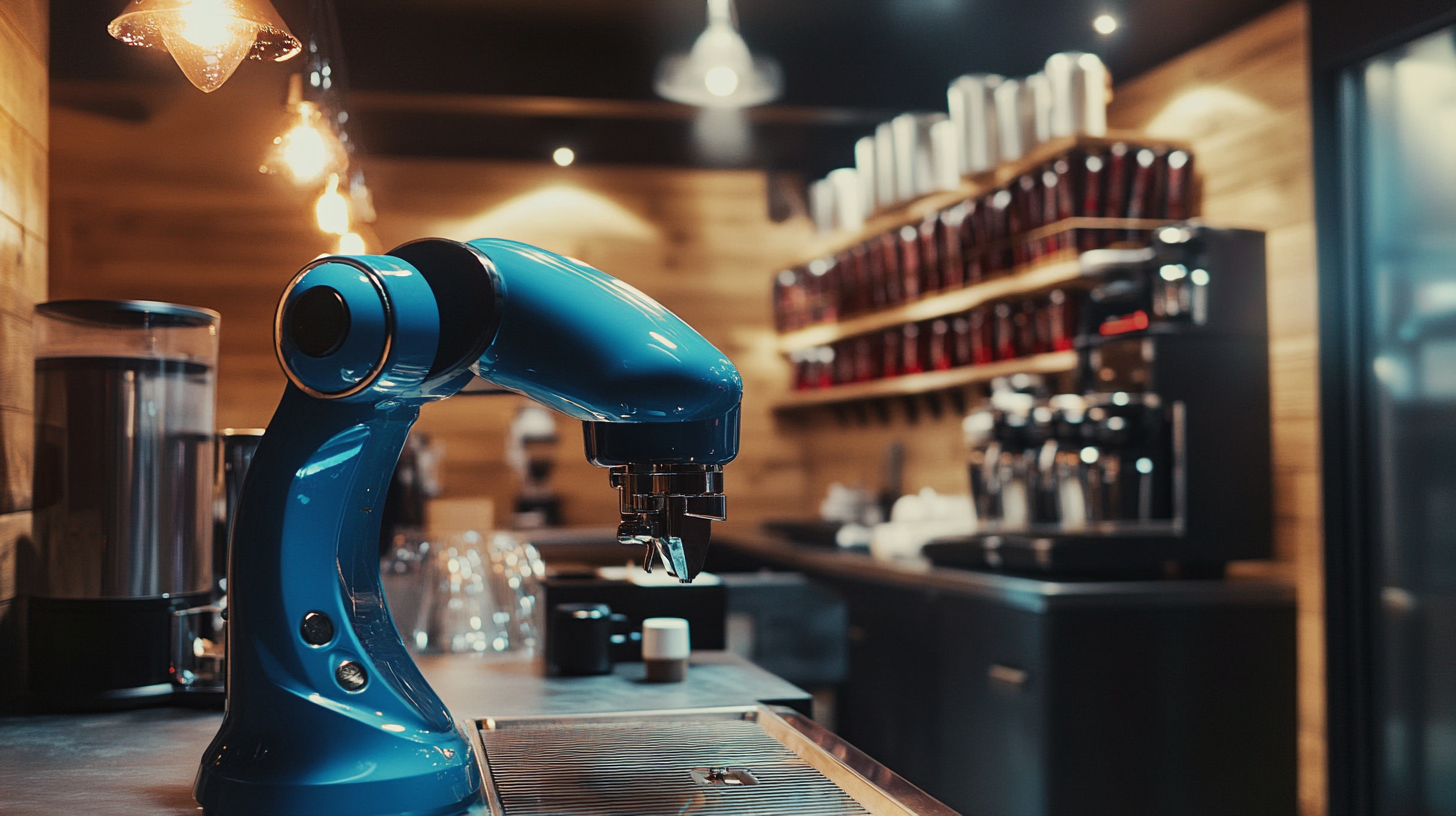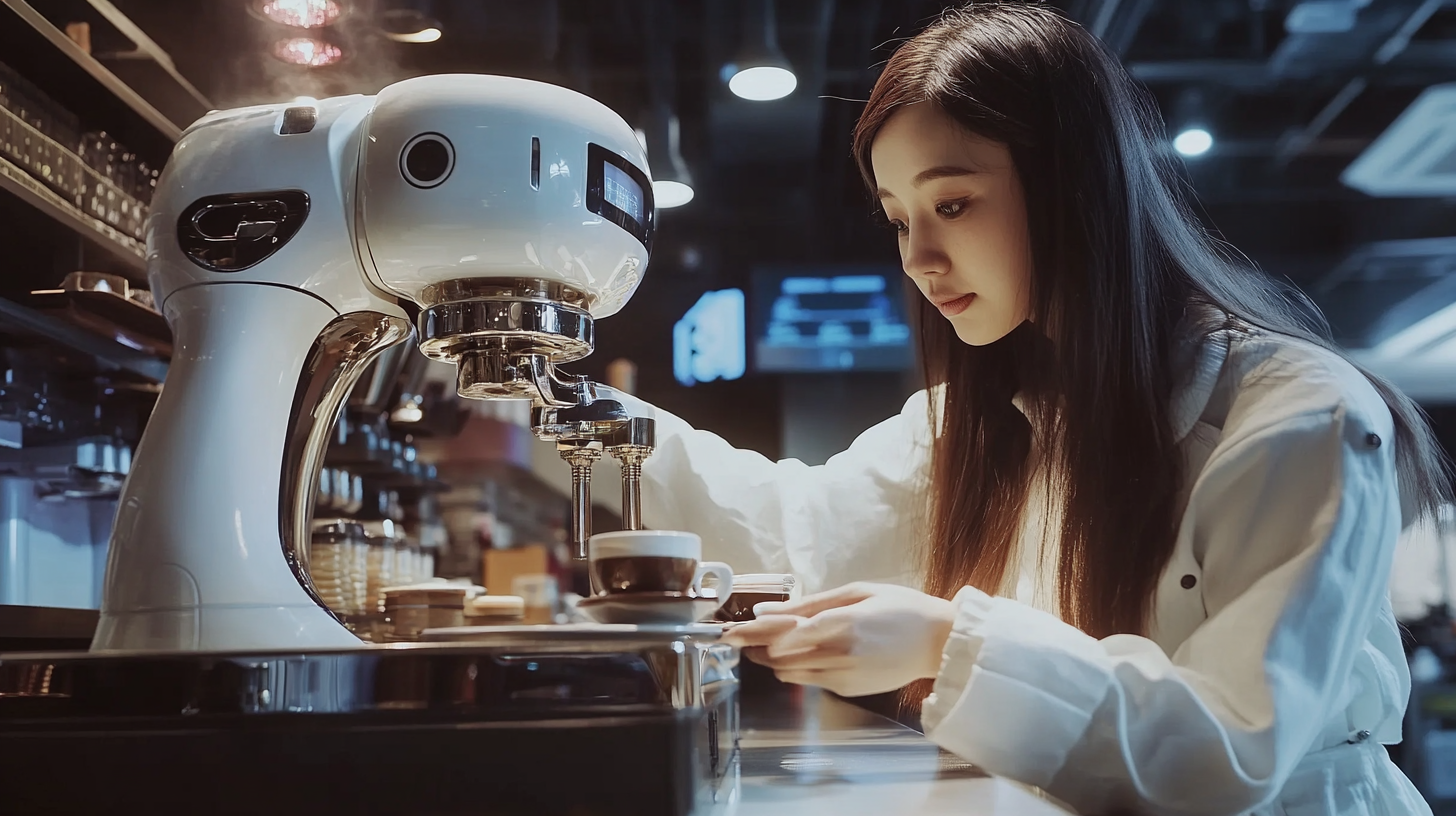China Coffee Robot Industry Thrives Amidst US China Tariff Challenges
In the face of escalating tariffs between the United States and China, the coffee robot industry in China is experiencing remarkable growth. Despite the trade tensions and economic challenges, innovative companies are leveraging advanced technology to revolutionize coffee preparation and service. Coffee robots, designed to enhance efficiency and consistency in brewing, are not only catering to the growing demand for specialty coffee but also addressing labor shortages in the café industry. As consumer preferences shift towards convenience and quality, these automated solutions are proving to be a game-changer. Moreover, the resilience of Chinese manufacturers in navigating the complexities of the tariff landscape illustrates their adaptability and commitment to staying ahead in the global marketplace. This blog will delve into the factors driving the success of coffee robots in China and the potential implications of this dynamic industry for international trade relations.

Emerging Trends in the China Coffee Robot Market Amid Trade Tariffs
The coffee robot market in China is experiencing significant growth despite the challenges posed by US-China trade tariffs. As these tariffs continue to reshape international trade dynamics, innovative companies in China are seizing the opportunity to enhance their technologies and capitalize on their domestic market. With a growing demand for automation in food and beverage services, Chinese manufacturers are developing advanced coffee robots that not only meet local tastes but also set the stage for potential export beyond China’s borders.
Emerging trends in the China coffee robot market highlight a move towards customization and user-friendly interfaces. Consumers are increasingly looking for personalized coffee experiences, prompting developers to introduce machines that can cater to specific preferences, such as brewing methods and flavor profiles. Furthermore, the integration of artificial intelligence and machine learning is revolutionizing the way coffee robots operate, allowing for predictive maintenance and improved customer interaction. As the industry continues to adapt, these innovations are likely to enhance consumer engagement and drive market growth, even amidst challenging trade conditions.

Impact of US-China Tariffs on Coffee Robotics Supply Chains and Costs
The ongoing US-China tariffs have had a significant impact on various industries, and the coffee robotics sector is no exception. As tensions between the two nations escalate, many companies in the coffee robotics industry are grappling with increased costs associated with imported materials and components. These tariffs have necessitated a reevaluation of supply chains, as businesses seek to mitigate the financial strain caused by additional duties and shipping expenses.
To adapt to these challenges, coffee robotics manufacturers are exploring alternative sourcing strategies, including local production and the development of domestic partnerships. This shift not only aims to minimize reliance on imported goods but also to bolster the resilience of local economies. As companies innovate and refine their processes in response to tariff pressures, there is a potential for the coffee robotics industry to evolve, ultimately leading to advancements in technology and efficiency. The current environment, although challenging, could pave the way for a more robust and self-sustaining sector.
Impact of US-China Tariffs on Coffee Robotics Supply Chains
Growth Projections for China's Coffee Robot Industry by 2025
As China's coffee robot industry gains momentum, forecasts indicate significant growth by 2025. With an increasing number of cafes and growing consumer preference for convenience, the takeout coffee market is on the rise, directly boosting the demand for coffee robots. These robots are equipped to enhance customer experiences and streamline operations, catering to the fast-paced, coffee-on-the-go lifestyle that has become prevalent among urban dwellers.
The integration of advanced humanoid robots into the coffee industry is not just about automation; it's about providing high-quality and personalized service. With China's humanoid robot market projected to reach 5.3 billion yuan by 2025, there is a clear trend towards embracing technology in coffee preparation and service. This growth is propelled by the increasing number of patents related to robotic technology, indicating a dedicated focus on innovation within the industry. As businesses continue to adopt these cutting-edge solutions, China's coffee robot industry stands poised for thriving expansion in the coming years.
Technological Advancements Driving Coffee Robot Adoption in China
The coffee robot industry in China is experiencing remarkable growth, driven primarily by technological advancements that make coffee preparation more efficient and appealing. As disposable incomes rise in developing countries, consumers are increasingly willing to invest in premium coffee appliances, including automated coffee machines. This shift is supported by a global trend toward automation, which is reshaping the coffee landscape.
Tips for potential coffee robot adopters include considering the type of coffee machine that best suits your needs. Fully automated machines are gaining popularity for their convenience, allowing users to enjoy barista-quality coffee with minimal effort. Moreover, understanding the evolving role of the barista is essential; as technology advances, these professionals are increasingly focusing on enhancing customer experience rather than repetitive tasks.
Additionally, staying informed about the latest market trends can help make informed purchasing decisions. With the global coffee machine market projected to surge, now is an opportune time to explore how automation can enhance your coffee experience at home or in a commercial setting. Embracing these innovations not only saves time but also aligns with a broader movement toward a more automated future in the food and beverage industry.
China Coffee Robot Industry Thrives Amidst US China Tariff Challenges - Technological Advancements Driving Coffee Robot Adoption in China
| Year | Coffee Robot Sales (Units) | Market Growth Rate (%) | Key Players | Technological Advancements |
|---|---|---|---|---|
| 2020 | 5,000 | 15% | Robota, CafeX | Automated Brewing Systems |
| 2021 | 10,000 | 25% | Luckin Coffee, Xiaomi | AI and Machine Learning |
| 2022 | 20,000 | 30% | Douyin, Nescafe | Robotic Process Automation |
| 2023 | 35,000 | 40% | Starbucks, Alibaba | Cloud Connectivity |
Competitive Landscape: How Chinese Manufacturers Are Gaining Market Share Despite Tariffs
The coffee robot industry in China is experiencing remarkable growth, even as it navigates the complexities introduced by US-China tariffs. Chinese manufacturers are capitalizing on their strengths, such as advanced robotics technology and competitive pricing, to carve out a significant portion of the global market. Their agility in adapting to changing circumstances allows them to offer innovative solutions that appeal to coffee lovers and businesses alike.
In the face of tariff challenges, Chinese companies are not only enhancing their product offerings but are also exploring new markets beyond the United States. By investing in research and development, they are creating more sophisticated coffee robots that incorporate artificial intelligence and automation, making them more efficient and user-friendly. This strategic pivot not only mitigates the impact of tariffs but also positions them as formidable competitors on the world stage, proving that adversity can spur innovation and growth in the industry.


